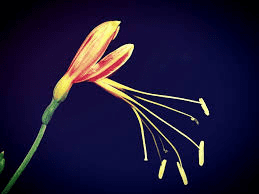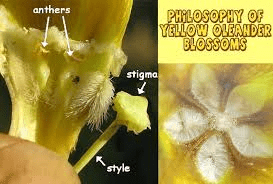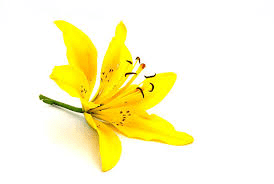Lettuce stigma is a key component of the lettuce plant’s reproductive system, located at the top of the pistil, the female reproductive part of the flower. It plays an essential role in the process of fertilization, which is crucial for seed production.
The stigma is the part of the pistil that receives pollen. It is typically located at the tip of the style, a slender tube that connects the stigma to the ovary. In lettuce, the stigma is sticky or feathery, designed to capture and hold pollen grains that are transferred from the male reproductive parts of the flower (the stamens). The stickiness of the stigma helps to ensure that pollen adheres to its surface, which is vital for successful fertilization.
Once pollen grains land on the stigma, they germinate and form a pollen tube that extends down the style towards the ovary. The pollen tube carries the sperm cells from the pollen grains to the ovules located within the ovary. This process is essential for fertilizing the ovules, which will eventually develop into seeds.
The structure of the stigma varies among different plant species, and in lettuce, it is relatively simple. It is often covered in a layer of cells that secrete a sticky substance, which enhances its ability to capture pollen. This sticky surface is crucial for ensuring that pollen grains remain attached until they can complete their journey down the style.
The function of the stigma is not only to receive pollen but also to recognize and facilitate the successful transfer of pollen to the ovules. The interaction between the pollen and stigma involves complex biochemical signals that ensure compatibility and promote successful fertilization. In lettuce, this process is carefully regulated to maximize the chances of producing viable seeds.
The health and effectiveness of the stigma are critical for successful seed production. Factors such as environmental conditions, plant health, and pollinator activity can all impact the efficiency of pollen capture and fertilization. In agriculture and horticulture, understanding the role of the stigma can help in breeding programs aimed at improving seed yield and quality.
The stigma of lettuce is a vital part of the flower’s reproductive system. It is responsible for receiving pollen and facilitating the fertilization process by allowing pollen to travel through the style to the ovary. Its sticky surface and biochemical interactions play a crucial role in ensuring successful seed production, which is essential for the growth and continuation of the lettuce plant.
The Economic Importance and Uses of Lettuce Stigma

1. Seed Production: The stigma is crucial for lettuce seed production. It is the part of the pistil that receives pollen from the stamens, which is necessary for fertilizing the ovules and producing seeds.
2. Pollination Support: The stigma’s role in catching and holding pollen is essential for successful pollination and subsequent seed production in lettuce.
3. Herbal Medicine: In traditional medicine, the stigma is sometimes used for its potential mild diuretic and anti-inflammatory properties, though this use is less common.
4. Soil Health: Composting lettuce stigmas adds organic matter to the soil, enhancing its fertility and improving its structure and moisture retention.
5. Natural Dyes: Pigments from lettuce stigmas can be extracted and used to create natural dyes for textiles and crafts, providing an eco-friendly alternative to synthetic dyes.
6. Educational Purposes: Lettuce stigmas are used in botanical studies to teach about plant reproductive systems, particularly the role of the stigma in capturing pollen.
7. Animal Feed: Finely chopped lettuce stigmas can be included in animal feed, providing additional nutrients for livestock and poultry.
8. Decorative Uses: Dried lettuce stigmas can be used in floral arrangements and craft projects, adding unique visual elements and textures.
9. Eco-Friendly Packaging: Processed lettuce stigmas can be used in biodegradable packaging materials, supporting sustainability and reducing plastic use.
10. Mulch: Lettuce stigmas can be used as mulch to control soil erosion and retain moisture in garden beds.
11. Biodiversity Support: Utilizing lettuce stigmas supports plant diversity, contributing to ecosystem stability and local biodiversity.
12. Skincare Products: Extracts from lettuce stigmas may be used in skincare products for their potential soothing and anti-inflammatory effects.
13. Natural Pest Control: Lettuce stigmas can be used in integrated pest management to help deter pests in gardens and agricultural settings.
14. Traditional Crafts: In some cultures, lettuce stigmas are used in traditional crafts and ceremonial activities, reflecting their cultural significance.
15. Plant-Based Fiber: The fibers from lettuce stigmas can be used to create sustainable products and composites, supporting eco-friendly manufacturing practices.
16. Herbal Infusions: Lettuce stigmas can be used in herbal infusions to offer mild health benefits and unique flavors.
17. Homemade Teas: Dried lettuce stigmas can be brewed into herbal teas, providing a calming beverage with potential health benefits.
18. Educational Crafts: Lettuce stigmas are used in educational craft projects to illustrate plant anatomy and reproductive functions.
Read Also: Himalayan Cats (Felis catus) Description and Complete Care Guide
The Products and By-products That Can Be Derived From Lettuce Stigmas

1. Lettuce Seeds: The stigma is essential for the production of lettuce seeds, which are necessary for growing new plants.
2. Natural Dyes: Pigments from lettuce stigmas can be extracted and used to create natural dyes for textiles and crafts.
3. Herbal Teas: Dried lettuce stigmas can be brewed to make herbal teas, offering unique flavors and potential health benefits.
4. Compost: Lettuce stigmas can be composted to add organic matter and nutrients to the soil, improving soil quality.
5. Animal Feed: Finely chopped lettuce stigmas can be included in animal feed to provide additional nutrition.
6. Biodegradable Packaging: Processed lettuce stigmas can be used to produce biodegradable packaging materials.
7. Skincare Products: Extracts from lettuce stigmas are incorporated into skincare formulations for their potential soothing and anti-inflammatory effects.
8. Decorative Items: Dried lettuce stigmas can be used in floral arrangements and crafts, adding visual interest and texture.
9. Mulch: Lettuce stigmas can be used as mulch to help control soil erosion and retain moisture in garden beds.
10. Educational Materials: Lettuce stigmas are used in educational settings to teach about plant reproductive systems and anatomy.
11. Herbal Infusions: Infused with water, lettuce stigmas create herbal infusions with mild health benefits and unique flavors.
12. Plant-Based Composites: Fibers from lettuce stigmas can be used in creating plant-based materials and composites for sustainable product development.
13. Traditional Crafts: Lettuce stigmas are used in traditional crafts and ceremonies, reflecting their cultural significance.
14. Natural Pest Repellent: Lettuce stigmas can help repel pests when used in gardens, contributing to integrated pest management.
15. Soil Amendment: Used as a soil amendment or compost ingredient, lettuce stigmas enhance soil health and fertility.
16. Educational Crafts: Lettuce stigmas are used in crafts and activities to demonstrate plant anatomy and reproductive systems.
17. Eco-Friendly Gardening: Lettuce stigmas support sustainable gardening practices by improving soil health and contributing to pest management.
Read Also: Russian Blues (Felis catus) Cats Description and Complete Care Guide
Frequently Asked Questions (FAQ’s) About Lettuce Stigmas

1. What are lettuce stigmas?
Lettuce stigmas are the part of the pistil that receives pollen from the stamens. They are essential for fertilization and seed production in lettuce.
2. How do lettuce stigmas contribute to seed production?
Lettuce stigmas capture pollen from the stamens, facilitating fertilization of the ovules within the ovary. This process leads to the production of seeds.
3. Can lettuce stigmas be used in herbal medicine?
Yes, in traditional herbal medicine, lettuce stigmas are sometimes used for their potential mild diuretic and anti-inflammatory effects, though this application is less common.
4. How can lettuce stigmas be used in natural dyes?
Pigments from lettuce stigmas can be extracted and used to create natural dyes for textiles and crafts, providing an environmentally friendly option compared to synthetic dyes.
5. Are lettuce stigmas beneficial for soil health?
Yes, composting lettuce stigmas adds organic matter to the soil, enhancing its structure, fertility, and moisture retention.
6. Can lettuce stigmas be used in animal feed?
Yes, finely chopped lettuce stigmas can be included in animal feed to provide additional nutrients for livestock and poultry.
7. How are lettuce stigmas used in decorative projects?
Dried lettuce stigmas can be used in floral arrangements and craft projects, where they add unique visual elements and textures.
8. What are the educational uses of lettuce stigmas?
Lettuce stigmas are used in botanical studies to teach about plant reproduction, particularly their role in capturing pollen and facilitating fertilization.
9. Can lettuce stigmas be used in skincare products?
Yes, extracts from lettuce stigmas may be used in skincare products for their potential soothing and anti-inflammatory effects.
10. How can lettuce stigmas help in pest control?
Lettuce stigmas can be used in integrated pest management strategies to help deter pests in gardens and agricultural settings, supporting sustainable gardening practices.
Read Also: Low-Maintenance Plants for Beginners

